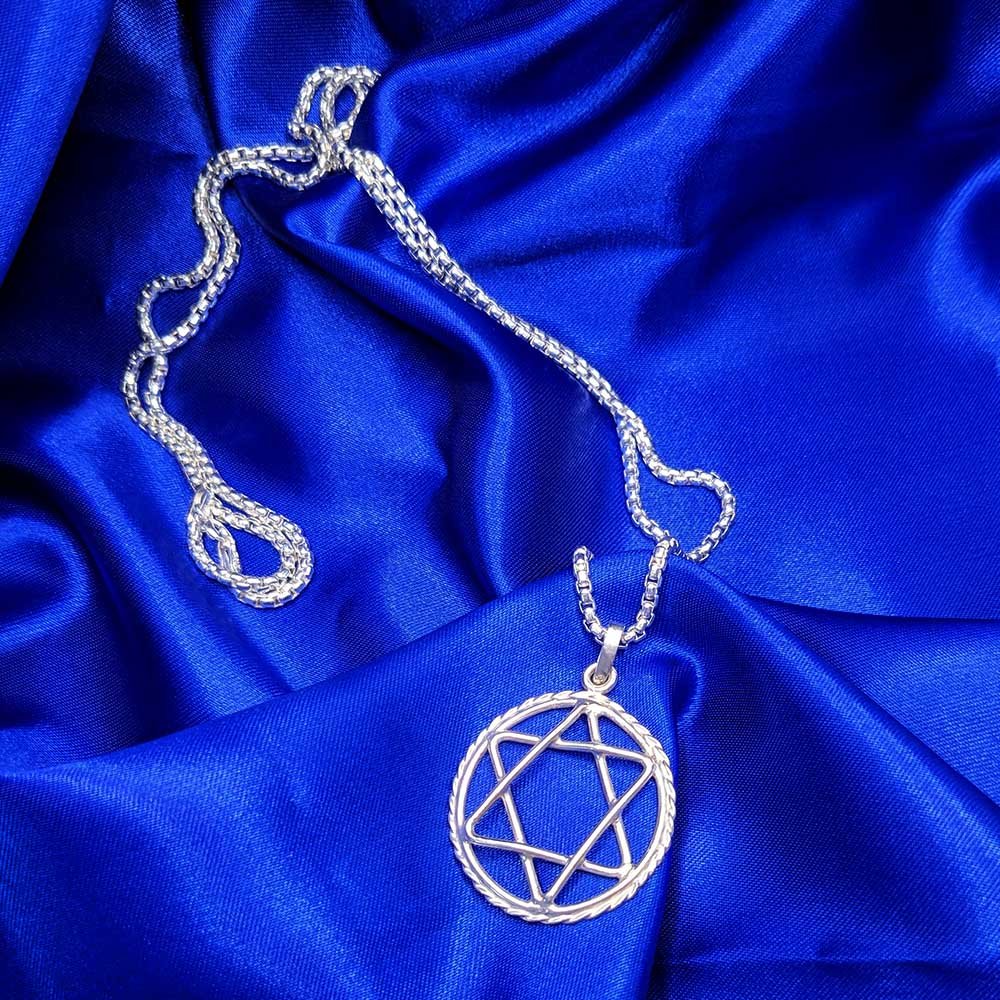Eden
Brooch: responsibly sourced sterling silver, heat coloured titanium, ethically sourced 4.46 carat white topaz from Mount Surprise, Queensland.
The fig tree is one of the first plants mentioned in Bereshit (Genesis) in the Torah, when its leaves were used by Adam and Eve in the Garden of Eden to clothe themselves immediately after eating of the Tree of Knowledge (suggesting that perhaps the Tree of Knowledge was a fig tree). Fig trees are also one of the Seven Species—a group of edible plants mentioned in the book of Dvarim as natural endowments of the land of Israel. Alongside wheat, barley, grapes, pomegranates, olives, and dates, the fig was considered by the Ancient Jewish Kingdoms and the Israelites as staples of their diet. The first fruits of the Seven Species were also used as offerings traditionally given to the Jewish Temple in Jerusalem by worshippers—the wood of the fig tree serving as fuel for the Temple’s Eternal Flame. In the Ancient Jewish holiday of Tu Be’Shvat, also known as the New Year for Trees, dried figs are traditionally eaten as part of the celebration.
These are but some of the significances of the fig tree to the Jewish people. That the native species of the Levant are so enmeshed within the foundation of Jews as an ethnoreligious group speaks strongly to our connection to the land of Israel. This brooch is an homage to that connection.
Dimensions: 15.5 × 11cm (approximately 6.10 × 4.33 inches).
*Please note that the titanium pin that fastens this brooch is 1.5mm thick and therefore works best on looser woven fabrics.
Brooch: responsibly sourced sterling silver, heat coloured titanium, ethically sourced 4.46 carat white topaz from Mount Surprise, Queensland.
The fig tree is one of the first plants mentioned in Bereshit (Genesis) in the Torah, when its leaves were used by Adam and Eve in the Garden of Eden to clothe themselves immediately after eating of the Tree of Knowledge (suggesting that perhaps the Tree of Knowledge was a fig tree). Fig trees are also one of the Seven Species—a group of edible plants mentioned in the book of Dvarim as natural endowments of the land of Israel. Alongside wheat, barley, grapes, pomegranates, olives, and dates, the fig was considered by the Ancient Jewish Kingdoms and the Israelites as staples of their diet. The first fruits of the Seven Species were also used as offerings traditionally given to the Jewish Temple in Jerusalem by worshippers—the wood of the fig tree serving as fuel for the Temple’s Eternal Flame. In the Ancient Jewish holiday of Tu Be’Shvat, also known as the New Year for Trees, dried figs are traditionally eaten as part of the celebration.
These are but some of the significances of the fig tree to the Jewish people. That the native species of the Levant are so enmeshed within the foundation of Jews as an ethnoreligious group speaks strongly to our connection to the land of Israel. This brooch is an homage to that connection.
Dimensions: 15.5 × 11cm (approximately 6.10 × 4.33 inches).
*Please note that the titanium pin that fastens this brooch is 1.5mm thick and therefore works best on looser woven fabrics.
Brooch: responsibly sourced sterling silver, heat coloured titanium, ethically sourced 4.46 carat white topaz from Mount Surprise, Queensland.
The fig tree is one of the first plants mentioned in Bereshit (Genesis) in the Torah, when its leaves were used by Adam and Eve in the Garden of Eden to clothe themselves immediately after eating of the Tree of Knowledge (suggesting that perhaps the Tree of Knowledge was a fig tree). Fig trees are also one of the Seven Species—a group of edible plants mentioned in the book of Dvarim as natural endowments of the land of Israel. Alongside wheat, barley, grapes, pomegranates, olives, and dates, the fig was considered by the Ancient Jewish Kingdoms and the Israelites as staples of their diet. The first fruits of the Seven Species were also used as offerings traditionally given to the Jewish Temple in Jerusalem by worshippers—the wood of the fig tree serving as fuel for the Temple’s Eternal Flame. In the Ancient Jewish holiday of Tu Be’Shvat, also known as the New Year for Trees, dried figs are traditionally eaten as part of the celebration.
These are but some of the significances of the fig tree to the Jewish people. That the native species of the Levant are so enmeshed within the foundation of Jews as an ethnoreligious group speaks strongly to our connection to the land of Israel. This brooch is an homage to that connection.
Dimensions: 15.5 × 11cm (approximately 6.10 × 4.33 inches).
*Please note that the titanium pin that fastens this brooch is 1.5mm thick and therefore works best on looser woven fabrics.









